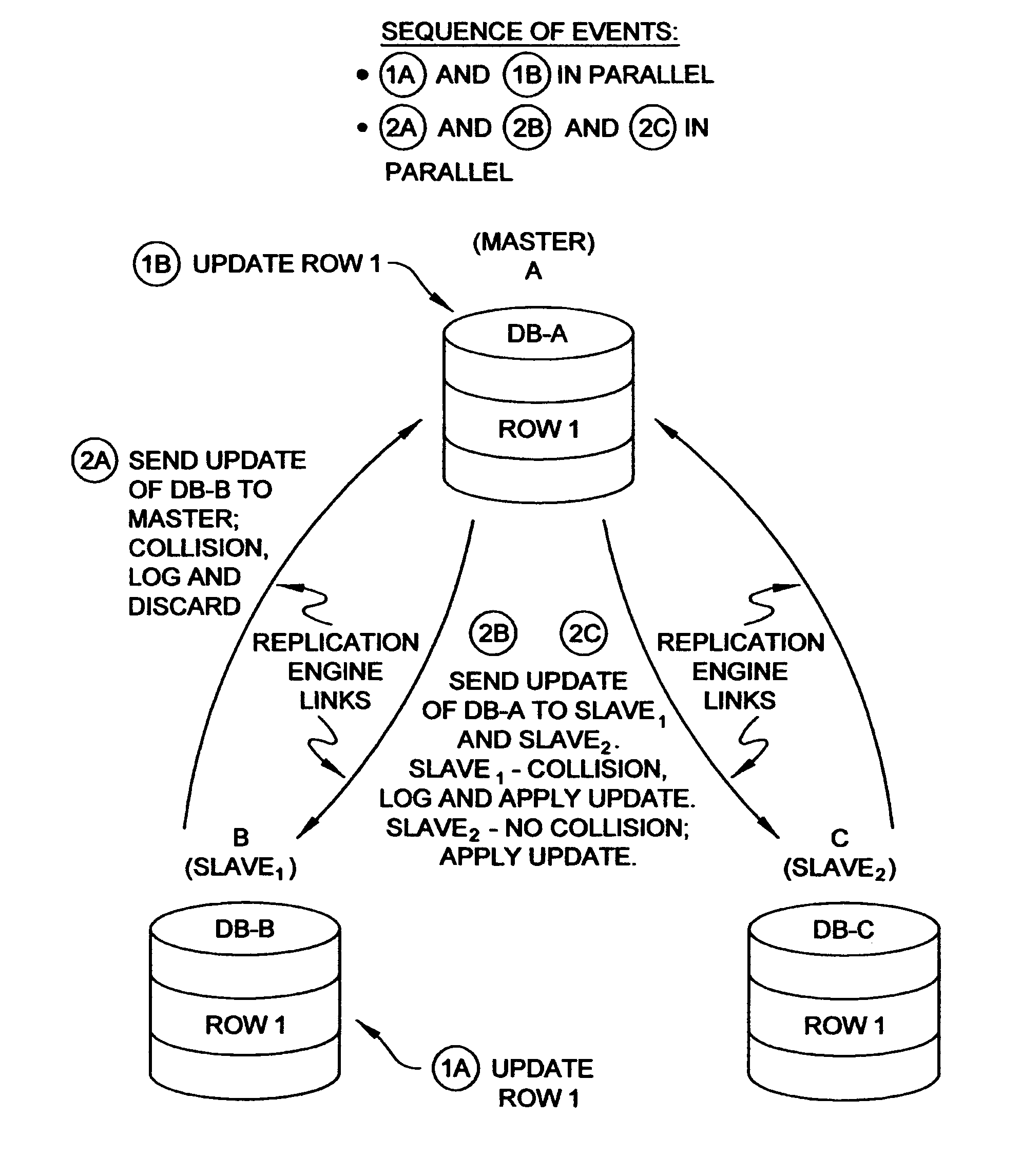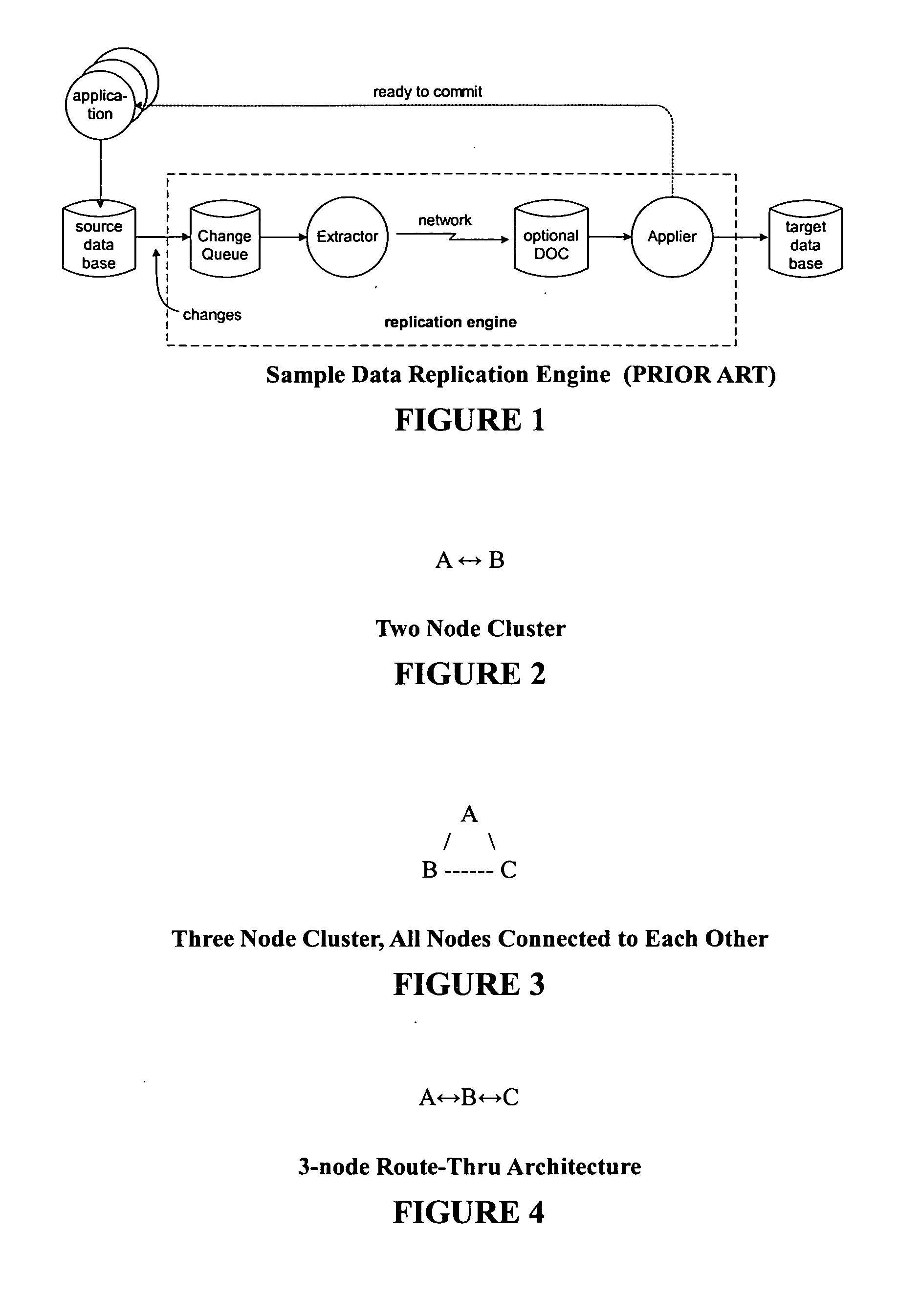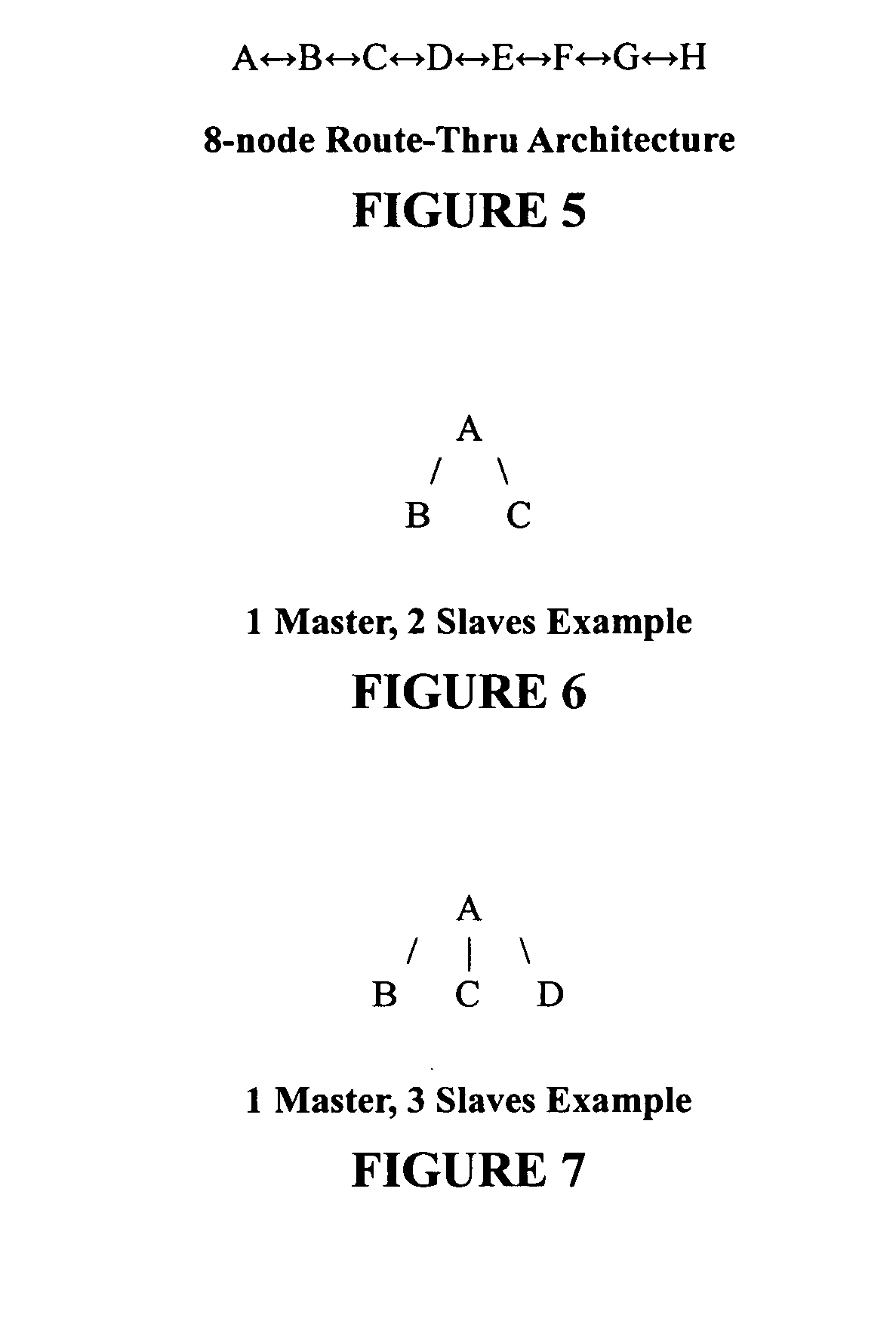This means that data collisions can occur (the same
record being updated simultaneously on more than one database), and need to be reconciled automatically by the replication engine.
This means that data collisions may occur because each database copy is updated independently of the other (the application modifies its copy of the database, the replication engine is then responsible for replicating this change to the other database copies, resolving any collisions that it detects in a deterministic manner).
For a three (or more) node cluster, the architecture is more complicated because there are more choices as to how to connect the nodes (see FIG. 3).
This
route-thru design means, however, that multi-node architectures have additional issues—end-to-end replication latency increases as the changes are propagated, and a loss of any non-end node means the chain is broken / fragmented (end nodes, or
nodal chains, may become isolated), which can lead to the so-called split-brain problem (
split brain refers to the database
divergence that can result when 2 or more isolated chains are allowed to continue
processing user data changes, as the database in each isolated chain can diverge from the databases in the other isolated chains).
Adding new slaves adds additional leaf nodes, all logically hung directly off the master (they can be hung off other slaves, however this increases replication latency and is generally less desirable).
Loss of the master is more complicated—it means a new master will need to be assigned.
Another type of duplicate key (or other constraint
processing) error can occur when unique alternate keys / indices (both are used interchangeably in this disclosure) are used.
In this case, the primary keys of two colliding records may not get a duplicate key error (because they are different); rather, a duplicate key error may occur on one or more of the unique alternate keys / indices.
In this approach, the incoming change may indeed be part of a “reversal” operation (some file systems allow base file inserts before index constraints are checked, hence the INSERT may result in an insert into the base file, followed by a duplicate key error on the index, followed by a reversing DELETE on the base file of the original INSERT).
This is of considerable value when the source and / or target event capture subsystem does not save or make this information readily available to the replication engine.
This can be a severe limitation when trying to initially synchronize the databases where the slave's database needs to be loaded into the master's database (e.g., the master's database is empty or is out-of-date and needs to be synchronized to one of the slave's databases).
Another case where the default collision logic can be a limitation is when implementing the unique index duplicate key error
recovery logic described above.
Without the following technique, it is very difficult (if not impossible) to tell when a particular master's event should be applied or be discarded when it collides with a duplicate key error on a unique index; this is particularly true for those file systems that issue “reversing” events into the data capture mechanism when the original event fails (e.g., when a insert on a master database yields a duplicate key error on a unique index, some file systems will actually save the original insert followed by a “reversing” delete into the replication
stream—in this case, it is acceptable to skip the pair of reversing events, or to discard them if they run into the same errors on replay at the target—in other words, do not make the slave database look like the master's during the transaction, only after the transaction completes).
Hence, when using the default master / slave logic, it is impossible to make a master database synchronize to a slave's database.
However, there may be situations when the user wants to modify this behavior, perhaps because they are not dumping their audit to tape (or disk) and a particular audit trail is no longer available (e.g., it rolled off the system and was not dumped).
When an auto-advance sequence occurs, data changes made to the source database will be lost (skipped) and the
target database may not match the source database, potentially requiring a reload of the
target database to re-synchronize it with the source database.
This approach is often counter-productive, however, as it generally slows database performance and often the physical data disk does not contain an up-to-date image of the database due to database write caching algorithms.
Hence, it is often not useful to remotely mirror the data disks (unless you disable write caching).
 Login to View More
Login to View More  Login to View More
Login to View More 


